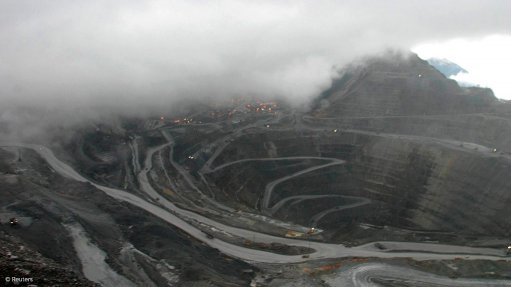MCA calls for cost protection in safeguard mechanism
PERTH (miningweekly.com) – The Minerals Council of Australia (MCA) has called for additional price risk management measures to be included in any changes to the safeguard mechanism to prevent excessive costs, damaging volatility or predatory price speculation and other forms of behaviour that would cost jobs and exports in Australia’s mining industry.
The safeguard mechanism requires Australia’s largest greenhouse-gas emitters to keep their net emissions below an emissions limit, and builds on the National Greenhouse and Energy Reporting scheme’s requirements.
The Australian government is currently consulting on options to reform the safeguard mechanism to help industry reduce emissions in line with Australia’s climate change targets.
In its submission to the Department of Climate Change, Energy, the Environment and Water, the MCA stated that the absence of a stronger price risk management measure threatened the industries Australia relied on for economic recovery and growth by undermining international competitiveness.
“The MCA and its members have a strong commitment to climate action, supporting the Paris Agreement and an industry ambition of net zero by 2050,” MCA CEO Tania Constable said.
“But this vital task will be undermined if a risk mechanism is not in place to ensure that any price generated by the scheme is sufficient to support emissions reductions, but not if so high that it impacts jobs and economic growth.
“The government must include an additional pathway, similar to the Renewable Energy Target shortfall charge or price cap in other international schemes, for facilities to satisfy compliance obligations and manage upside price risk by paying per tonne of carbon dioxide equivalent.
“This is in addition to including the proposed safeguard mechanism credits, and the existing carbon credit systems (Australian Carbon Credit Units), and international credits.”
Constable said that a form of price risk management occurs in comparable international schemes and would be in addition to the mechanisms proposed in the consultation.
“While the proposed changes have various design features to help facilities operate within their baselines, facilities will still be exposed to high compliance cost risk as the proposed changes to the safeguard mechanism will leave the carbon market attractive to speculators.
“In particular, unlike comparable carbon schemes in other jurisdictions and sectors, the proposed changes will leave safeguard mechanism facilities who are unable to reduce their emissions below their baseline allowance exposed to upside price risk.”
In its submission to the federal government, the MCA also made several other recommendations including that the scheme design minimises the risk of carbon leakage in the form of both production and investment leakage, and that existing safeguard mechanism facilities should not be competitively disadvantaged against new entrants owing to the baseline approach taken.
The MCA also recommended that the government should allow flexibility for facilities to choose between using facility-specific production-adjusted baselines, facility-specific fixed baselines, or industry average production adjusted baselines, and that the government should provide certainty that baselines would not be declined ahead of any supporting legislation needed to enact cost management measures contained in the consultation paper such as safeguard mechanism credits.
The MCA also highlighted the need for reform of federal, state and territory emissions approaches to ensure a least-cost approach to achieving the 2030 target, saying safeguard mechanism-covered facilities should be exempted from additional state-based emissions reduction obligations.
Comments
Press Office
Announcements
What's On
Subscribe to improve your user experience...
Option 1 (equivalent of R125 a month):
Receive a weekly copy of Creamer Media's Engineering News & Mining Weekly magazine
(print copy for those in South Africa and e-magazine for those outside of South Africa)
Receive daily email newsletters
Access to full search results
Access archive of magazine back copies
Access to Projects in Progress
Access to ONE Research Report of your choice in PDF format
Option 2 (equivalent of R375 a month):
All benefits from Option 1
PLUS
Access to Creamer Media's Research Channel Africa for ALL Research Reports, in PDF format, on various industrial and mining sectors
including Electricity; Water; Energy Transition; Hydrogen; Roads, Rail and Ports; Coal; Gold; Platinum; Battery Metals; etc.
Already a subscriber?
Forgotten your password?
Receive weekly copy of Creamer Media's Engineering News & Mining Weekly magazine (print copy for those in South Africa and e-magazine for those outside of South Africa)
➕
Recieve daily email newsletters
➕
Access to full search results
➕
Access archive of magazine back copies
➕
Access to Projects in Progress
➕
Access to ONE Research Report of your choice in PDF format
RESEARCH CHANNEL AFRICA
R4500 (equivalent of R375 a month)
SUBSCRIBEAll benefits from Option 1
➕
Access to Creamer Media's Research Channel Africa for ALL Research Reports on various industrial and mining sectors, in PDF format, including on:
Electricity
➕
Water
➕
Energy Transition
➕
Hydrogen
➕
Roads, Rail and Ports
➕
Coal
➕
Gold
➕
Platinum
➕
Battery Metals
➕
etc.
Receive all benefits from Option 1 or Option 2 delivered to numerous people at your company
➕
Multiple User names and Passwords for simultaneous log-ins
➕
Intranet integration access to all in your organisation

















